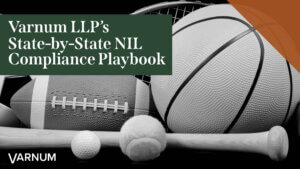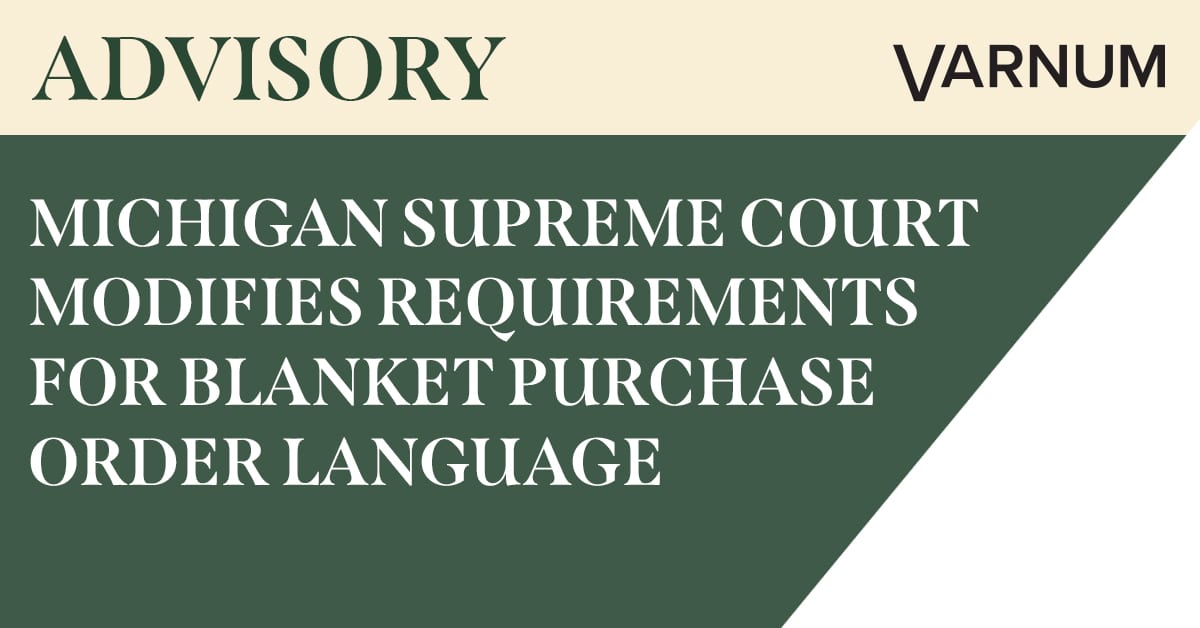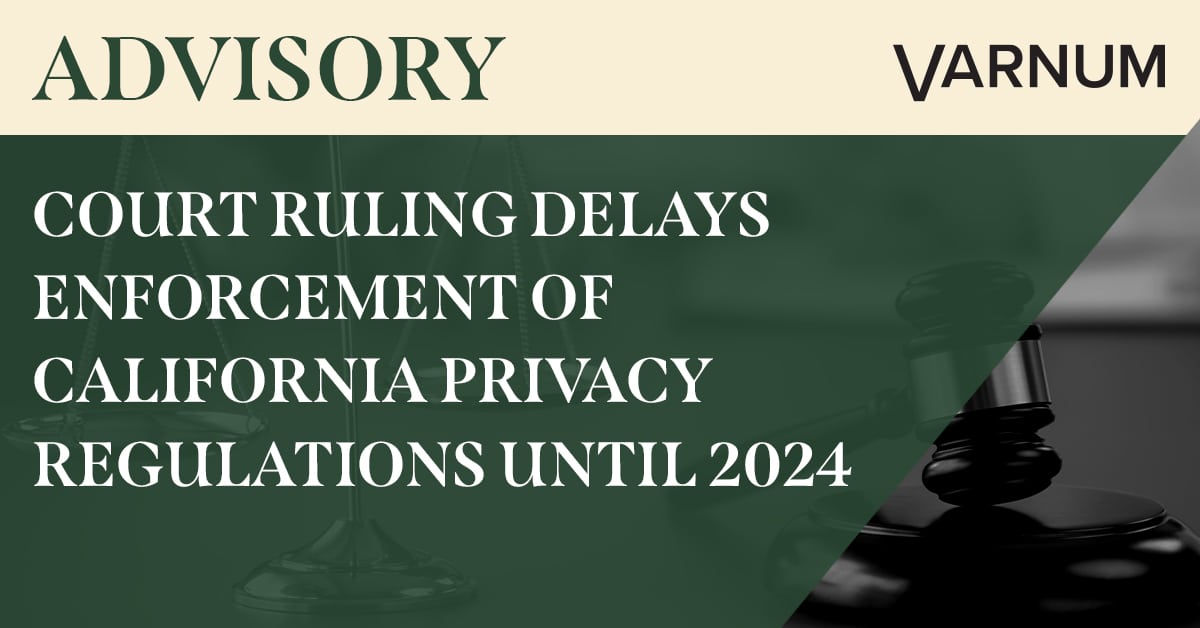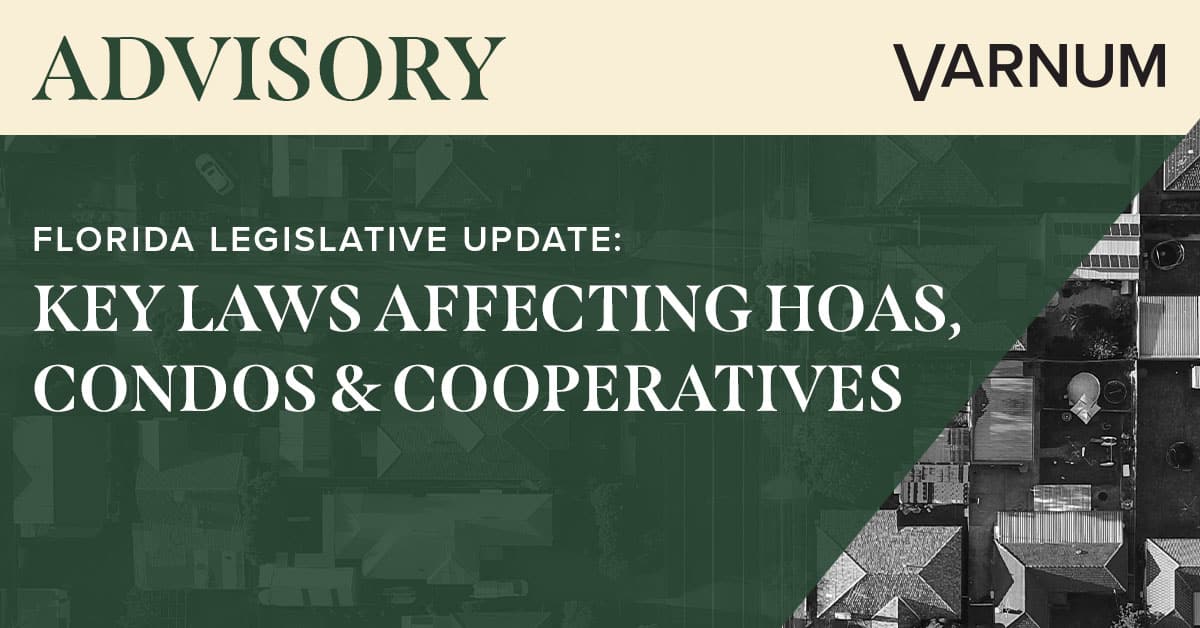Understanding the laws that govern homeowners and condominium owners associations is crucial for both board members and owners. These laws encompass various aspects of COA and HOA activities, such as board meetings, association fees and the multitude of responsibilities that HOAs and COAs must fulfill. Here are 10 of the most commonly asked questions as it relates to laws impacting COAs and HOAs.
What laws govern my association?
In Florida, Homeowners Associations (HOA)s and Condominium Owners Associations (COA)s are not for profit corporations and therefore are governed partly by Florida Statutes Chapter 617 (the Not for Profit Act). More specifically, HOAs are governed by Florida Statutes Chapter 720 (the HOA Act), and COAs are governed by Florida Statutes Chapter 718 (the COA Act). There are other statutes that affect specific areas of HOA and COA governance, for example, in collecting delinquent assessments the association must abide by the Fair Debt Collection Act, and in adopting and enforcing rules the association must abide by the Fair Housing Act.
In addition to the above statutes, the governance of the association is controlled and informed by the association’s declaration, bylaws and articles of incorporation, collectively, the governing documents. These documents are a contract between the association and the owners. Therefore, any violation of the governing documents by either the association or an owner is a breach of contract for which the HOA Act, or COA Act, along with the governing documents themselves, provide a means of enforcement. What an association board of directors and/or owners can and should do is impacted by the specific language of the governing documents. Therefore, it is rarely enough to look to the applicable statutes in a particular situation. Knowledge of the statutes must be backed up with an understanding of the governing documents of the particular association; however, if there is a direct conflict between the statutes and the governing documents, the statute controls. This sometimes happens when associations neglect to review and update their governing documents as statutes change over the years.
As a new Director, what do I need to do?
This is a multi-layered question; however, from a statutory standpoint, one of the first things a new director must do, whether elected or appointed, is be certified. Both Florida Statutes Chapter 720 (the HOA Act) and Florida Statutes Chapter 718 (the COA Act) require that new board members be certified within 90 days of being elected or appointed. New directors can meet this certification requirement in either of two ways. One way is for the new director to certify in writing to the secretary of the association that they have read the association governing documents and will uphold the same, and they will faithfully discharge their fiduciary duty to the association members. The other way is to complete and submit a certificate of completion of an approved certification course given by an approved provider. Varnum LLP is one such approved provider that offers approved certification courses on a regular basis.
What can the association’s board of directors do about owners that don’t pay their assessments?
Associations rely on the collection of regular assessments to fund the operation and maintenance of the common areas and amenities of the community. Additionally, a high delinquency rate can adversely affect the association’s credit rating, backing it harder for the association to secure lending if needed. The association’s authority to levy and collect assessments is granted by Florida Statutes Chapter 720 (the HOA Act) and Florida Statutes Chapter 718 (the COA Act). The procedures for levy and collecting assessments as well as addressing delinquent assessments are articulated in the statutes and further defined in the association’s governing documents.
In short, associations can levy both late fees and interest against delinquent accounts, and if the account remains delinquent, the association can ultimately record a claim of lien against the owner’s property and then file suit to foreclose the lien, resulting in a foreclosure sale to satisfy the amount owed the association. The collections, lien and foreclosure process all require specific notices to the owner and minimum timelines that must be followed. Therefore, it is essential that the association’s board of directors work with a qualified legal counsel to draft and implement a collections policy that meets these requirements and informs the owners of the process and repercussions.
In addition to liens and foreclosures, the association has other tools to address delinquent accounts. If an owner remains delinquent for more than 90 days, the association can suspend their voting rights and use of the common amenities. This may include the use of the clubhouse, fitness center, pool and other recreational facilities. The association may not, however, suspend the use of the common areas that provide ingress and egress to the property, such as roads and sidewalks.
If the owner is delinquent and the property is tenant occupied, the association can demand that all rent and other monies due to the owner from the tenant be paid directly to the association until the delinquency is cured. If the association makes such a demand and the tenant pays the sums to the association, the tenant is protected from an eviction action by the landlord for non-payment. Likewise, if the tenant does not pay the association after such a demand the association can evict the tenant for non-payment. In pursuing this course of action, the association does not take on any other obligation of the landlord.
Can Directors be removed from the board?
The short answer is yes; Directors can be removed from office under various circumstances. If the director is more than 90 days delinquent in a monetary obligation to the association, in addition to the repercussions above as an owner, the director is deemed to have abandoned their seat as a director.
Florida House Bill 919, which passed in this year’s legislative session, provides that a Director or Officer of an HOA must be removed if charged with certain offenses, including:
- Forgery of a ballot envelope or voting certificate used in an election;
- Theft or embezzlement involving association funds or property, Florida Statutes;
- Destruction of, or refusal to allow inspection or copying of, an official record of a homeowners’ association within the required time periods in furtherance of any crime; and
- Obstruction of justice.
See Florida Statutes, Section 720.3033(4)(a).
Additionally, directors can be recalled by the members. Florida Statutes, Section 720.303(10) for HOAs and Florida Statutes, Section 718.112(2)(l) for COAs give detailed procedures for the recall of directors and the director’s right to challenge the same. Member groups concerning pursuing a recall attempt as well as directors facing a recall effort are engaged to seek experienced legal counsel.
Are Directors personally liable for their actions as Directors?
Directors are generally not liable for their acts as directors, but can be held liable under certain situations. Directors are generally shielded from personal liability as long as they use their best business judgment in fulfilling their fiduciary duty to the membership. At the same, the directors and offices do have a fiduciary duty to the membership and can not act only in their personal best interest. Directors can have additional protection if they rely on the opinion of an expert in the area at issue. For example, if the directors rely on legal counsel regarding a question of law, or rely on a certified public accountant or tax expert regarding the tax question. However, the director will not be able to rely on the opinion of one not qualified in the area at issue. For example, the directors could not reasonably rely on the opinion of a New York attorney that happens to be an owner in the association regarding a question of Florida law. Such an opinion may or may not be helpful. However, it can be a substitute for the directors’ business judgment or the qualified opinion of legal counsel, licensed in the governing jurisdiction.
Associations carry Directors and Officer Insurance to insure against claims of directors and officer misconduct. This insurance may also cover employees and agents of the association, but normally does not provide coverage to the individual for intentional acts of misconduct or gross negligence. Directors with questions about their insurance coverage should consult their insurance carrier, or qualified legal counsel.
Who is legally obligated to pay association assessments?
All owners of real property within the association are members of the association with the rights, privileges and obligations of membership. The legal owner of record is obligated to pay the assessments and is subject to legal action for failure to do so, regardless of whether the owner of record occupies the property or not. This can sometimes create an issue when couples that own property jointly separate or divorce with resolving the legal title to the property. Even in the face of an agreement between the couple regarding the property and the payment of the assessment, each owner of record, as shown in the public records, is legally responsible for the assessment obligations and can face legal action for failure to pay the assessments.
Florida courts have repeatedly held that the only prerequisite to an owner’s obligation to pay assessments is the ownership of property in the association and that the assessment was properly levied. Any other dispute or claim the owner may have against the association is not a legal defense to failure to pay the assessments. See, Coral Way Condo. Invs., Inc. v. 21/22 Condo. Ass’n, Inc., 66 So. 3d 1038 (Fla. 3rd DCA 2011).
Can the association ban “pit bulls” or other dog breeds?
The association’s board of directors has the right and responsibility to adopt and enforce reasonable rules and regulations regarding the operation of the association, including issues regarding health, welfare and safety. These rules and regulations routinely include restrictions on the number, size and types of animals allowed in the community. What restrictions are reasonable varies demanding on the association.
While not categorically forbidden, our opinion is that breed-specific prohibitions or restrictions are not the best way to address the concerns related to animals, specifically dogs, within a community. As in other areas, the best approach is to regulate the behavior, not the label. For starters, while the term “Pit Bull” is commonly used, it is not a specific breed recognized by most canine associations. What is commonly referred to as a pit bull may be several different breeds, and determining a dog’s breed to the level of certainty for enforcement of a breed restriction may require an expert opinion of a veterinarian or even genetic testing of the animal.
Alternatively, we recommend that the association adopt a provision in its governing documents whereby the members covenant not to bring an aggressive dog into the community and to indemnify the association from all claims related to their animal(s) regardless of whether such claim is related to the animal’s aggressive behavior or otherwise. We recommend the provision further specifically empower the board to require the removal of any animal the board determines to be aggressive or otherwise pose a danger to the residents and/or guests of the community.
Are Directors’ personal emails official records of the association?
Florida law in this area is slightly unsettled and may be changing. Historically it has been understood that personal emails of the directors, even if discussing association business, are not official records. However, there are a few circumstances that may result in those emails becoming official records. For example, if the association’s manager, or CAM, is included in the email, the CAM’s emails are official records of the association. Likewise, if the email account is owned by the association, then the emails are likely to be considered official records.
It is important to remember that even if it is not an official record of the association, directors’ emails are discoverable in litigation if they are relevant to the issues of the litigation or reasonably likely to lead to the discovery of relevant evidence.
The best advice for directors regarding emails is to keep it professional, and don’t put anything in an email you would not want to be posted at the community pool. Once a director sends an email, they cannot control where it goes and who receives it.
Additionally, directors cannot vote by email, so, the board cannot have the CAM, board president or directors send an email asking what everyone thinks should be done about a situation or seeking approval of a course of action and then count that as a board vote for approving a particular action. All board votes have to occur at a duly noticed board meeting.
Can the Association restrict the owner’s access to the association’s records?
Owners have the right to access the association’s official records; however, the board of directors can adopt reasonable rules regarding said access including the frequency of requests. When an owner requests access to the official records, the association is obligated to make the records available within 10 business days. The association may, but is not required to, provide copies of the requested records. The requirement is to make the records available, not to provide copies. Many associations meet the requirement to make the records available by having all official records on a server that owners have login excess to. Other associations do not necessarily digitalize all records and have them in a file cabinet or even a simple banker’s box that the owner may search through to find the requested records. Either method, or a combination thereof, is acceptable, as long as the records are made available in the manner normally maintained in the normal course of business.
How should the board conduct board meetings?
This is a complex question that could be the subject of an entire article on its own. However, there are a couple of key points directors and managers should keep in mind.
Florida Statutes Chapter 720 (the HOA Act) and Florida Statutes Chapter 718 (the COA Act) require that board meetings be properly noticed at least 48 hours in advance except during a declared emergency. During an emergency, the statutes allow for board meetings with “reasonable notice.” However, the best practice is still to give as much notice as possible and only shortcut the 48-hour requirement in a true emergency.
The meeting notice is to include an agenda of the item the board is to address at the meeting. In regard to HOAs, this is a recent change to the statute, passed in the last legislative session, which takes affect October 1, 2023. Historically, the agenda requirement applied to Condominium Associations but not Homeowner’s Associations; however, the legislature has seen fit to make the two statutes coincide on this point.
Board meetings are to be open to the members, except the board may hold a closed executive session for two reasons. One is to discuss litigation issues with the association’s legal counsel. This is to preserve attorney-client privilege. The other situation that warrants a closed meeting is to discuss personal issues. This is to preserve the privacy of the employee involved.
The HOA Act and COA Act also provide that members have the right to speak on any meeting agenda item; however, associations can impose reasonable restrictions on member’s comments. Reasonable restrictions may include a time limit for each speaker and/or requiring those wishing to speak on an agenda item to sign up to speak before, or at the beginning of the meeting.
Board meetings should be conducted with a certain level of professionalism and decorum to maintain respect for all involved. Meetings are the place for open dialogue but should not be a debating society where directors or members feel compiled to justify their vote on any issue or convince others of the rightness of their position.
Please contact your Varnum attorney with any questions.


 To aid individuals, schools and collectives with the often inconsistent and rapidly developing legislative and executive actions of the states, Varnum’s dedicated team of NIL attorneys created an all-inclusive, state-by-state compliance playbook. Learn more and download your free copy:
To aid individuals, schools and collectives with the often inconsistent and rapidly developing legislative and executive actions of the states, Varnum’s dedicated team of NIL attorneys created an all-inclusive, state-by-state compliance playbook. Learn more and download your free copy: 




